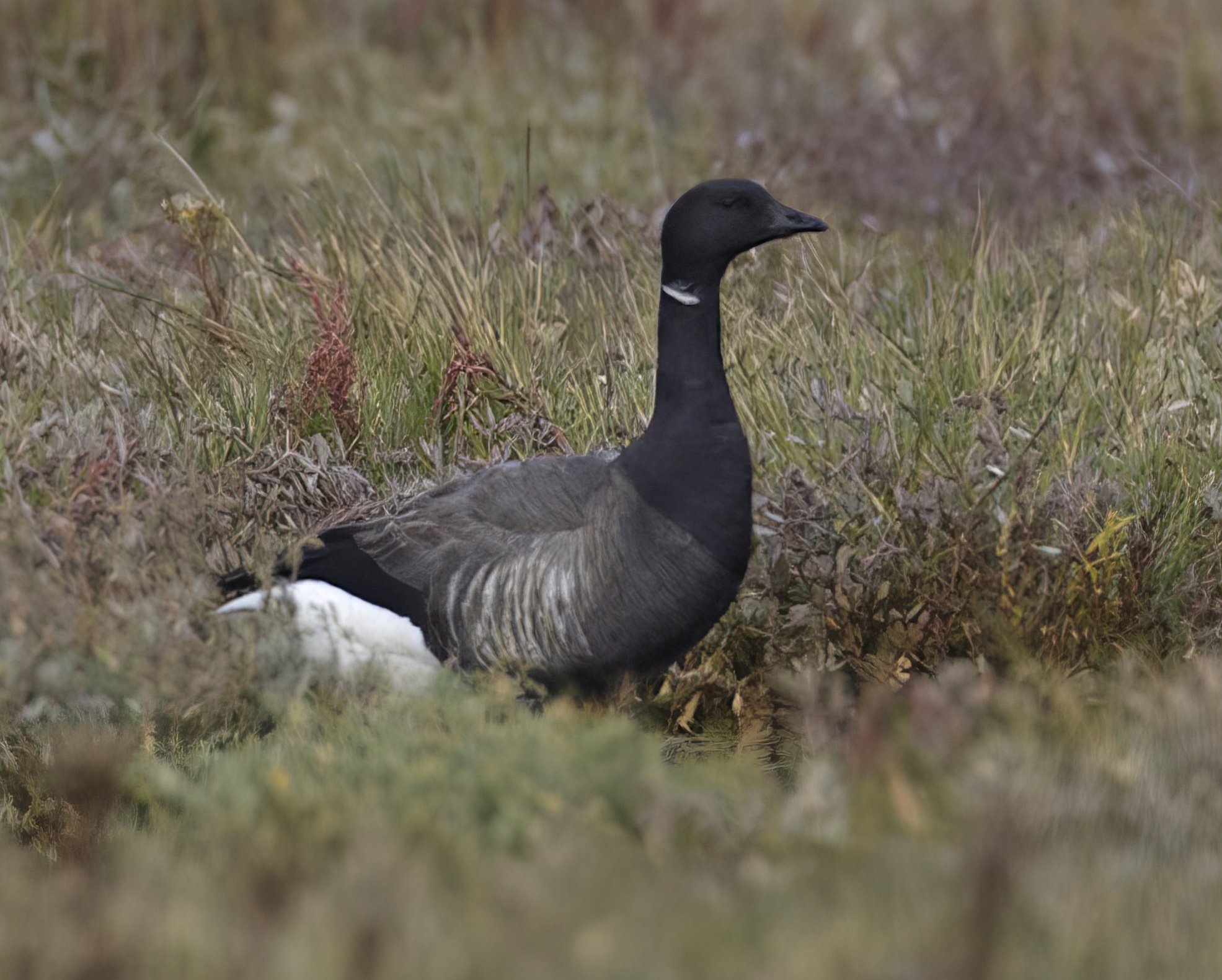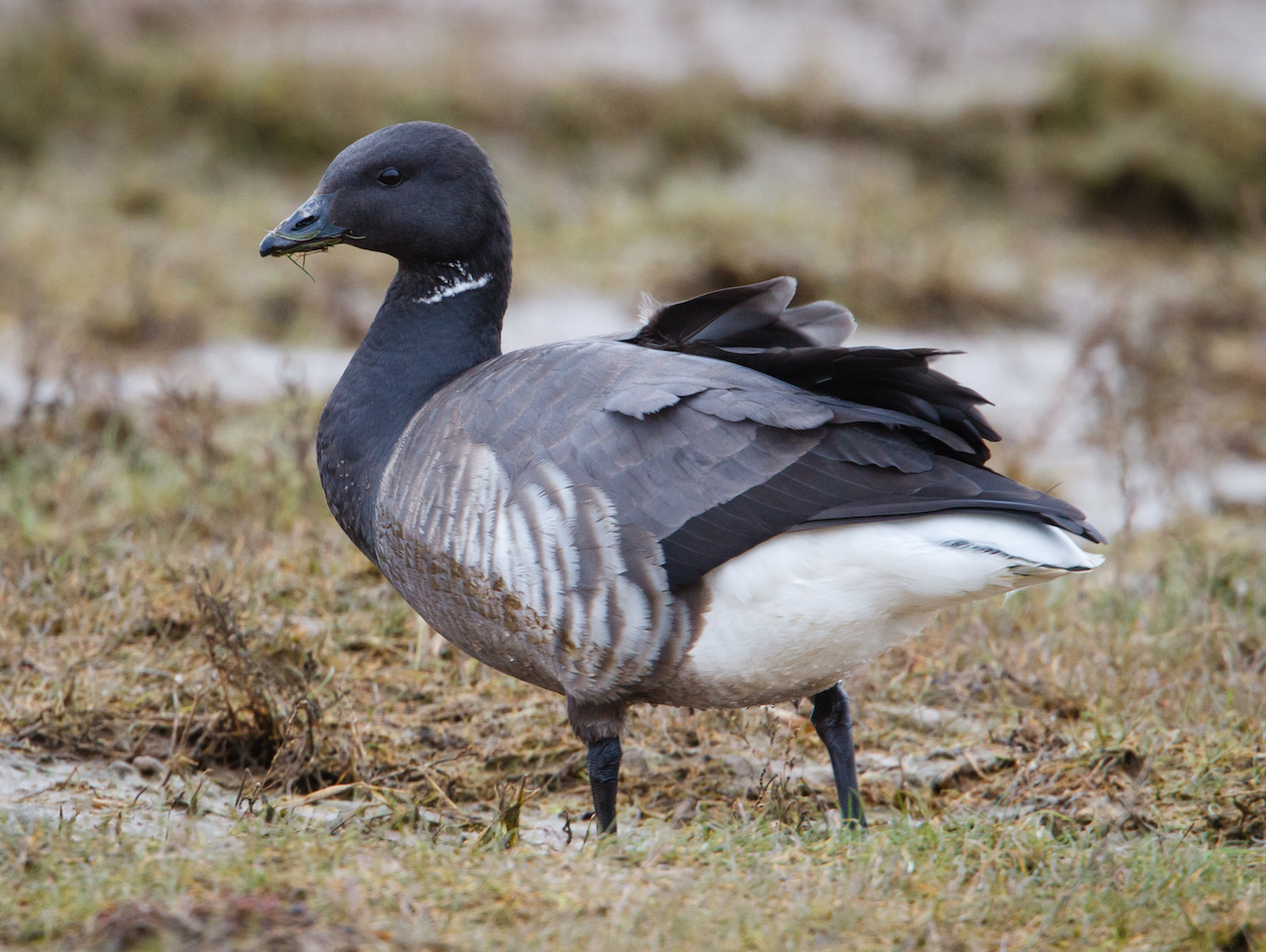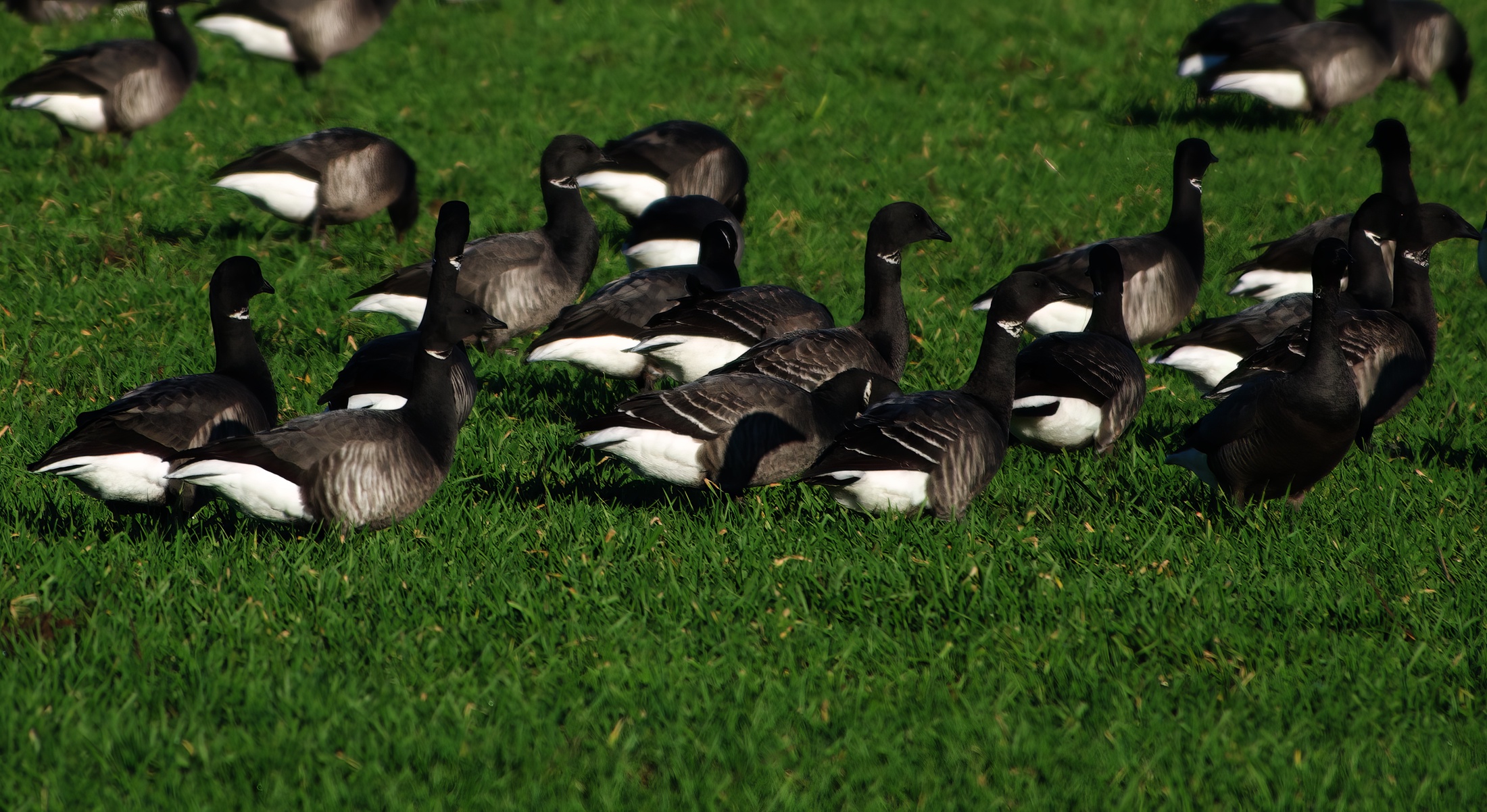Dark-bellied Brent Goose Branta bernicla bernicla
Three distinct races occur. Nominate Dark-bellied Brent is a very common coastal winter visitor September-May, mainly to The Wash and outer Humber. Scarce but regular in summer, especially on The Wash.



The Wash is of international importance for Dark-bellied Brent and peak counts between 2000 and 2019 have varied between 10,112 (2018/19) and 24,490 (2005/06). A noticeable crash occurred between 2007/08 (21,101) and 2008/09 (13,993) and every internationally important site had peak counts lower than their respective 5-year averages. For the three winters 2016-19 peak counts on The Wash have only been around 10,500.
Dark-bellied Brent breed mainly on the Taymyr Peninsula in Russia where they have been extensively studies and colour ringed. There is a large cyclical variation in reproductive success which has been attributed to failed breeding seasons with increased predator pressure and poor weather on the breeding grounds. One study in the Taimyr Peninsula looked at the breeding cycle of Brent Geese in six successive summer seasons from 1990-1995 and Arctic Fox Alopex lagopus abundance was also determined (Spaans et al 1998) . Wandering Arctic Foxes were numerous in 1992, and this was the only year in which foxes visited the small offshore island where Brent Geese used to nest. Most Brent did not even start to breed and disappeared, probably due to disturbance rather than predation. In 1995 Arctic Foxes were absent, Brent hatched goslings but failed to raise them as they were all predated, but not by foxes probably by gulls.
Dark-bellied Brent have been ringed in summer in Siberia as well as in winter and spring in the Netherlands, the United Kingdom, Germany and France. Birds are usually marked with two engraved coloured leg rings, one on either leg. The engraved letter/digit is repeated three times around the ring for easy identification. Some birds have been marked with one metal ring on one leg and an engraved two-digit colour-ring on the other. Each bird carries a unique combination. The colours used are: light-blue (B) or light-green (lime)(L), white (W), yellow (Y), orange (O), red (R), dark-blue (B), black (N) or dark-green (G). Sightings can be reported at https://cr-birding.org/. Colour-ringed birds are frequently seen on the Lincolnshire coast during the winter months and the BTO database has many such records. Foreign-ringed birds from the Taymyr Delta are well represented with sightings on The Wash, and birds ringed in Denmark and Germany have also been reported. Convwrsely, birds ringed in Lincolnshire have been reported from Denmark, Germany, Sweden and The Netherlands. The overall longevity record for a Brent Goose in the UK is more than 28 years old, and in Lincolnshire the oldest recorded is just over 13 years old.
Reference
Spaans, B., Blijleven, H. J., Popov, I. U., Rykhlikova, M. E., & Ebbinge, B.S. (1998). Dark-bellied Brent Geese Branta bernicla bernicla forego breeding when Arctic Foxes Alopex lagopus are present during nest initiation. Ardea, 86(1), 11-20.
